
Published: Last Updated:
Readtime: 24 min
Every product is carefully selected by our editors and experts. If you buy from a link, we may earn a commission. Learn more. For more information on how we test products, click here.
If you’re planning on building a sculpted body, it’s always important to emphasise the biceps. The beefy, front-arm section is a highly concentrated muscle group that suggests strength and demands respect. Unlike the chest or back, this region is one of the more visible on your body, so implementing the best bicep exercises into your workout regime is an absolute must. After all, large muscles are the calling card of the gym rat and can work wonders for your general appearance.
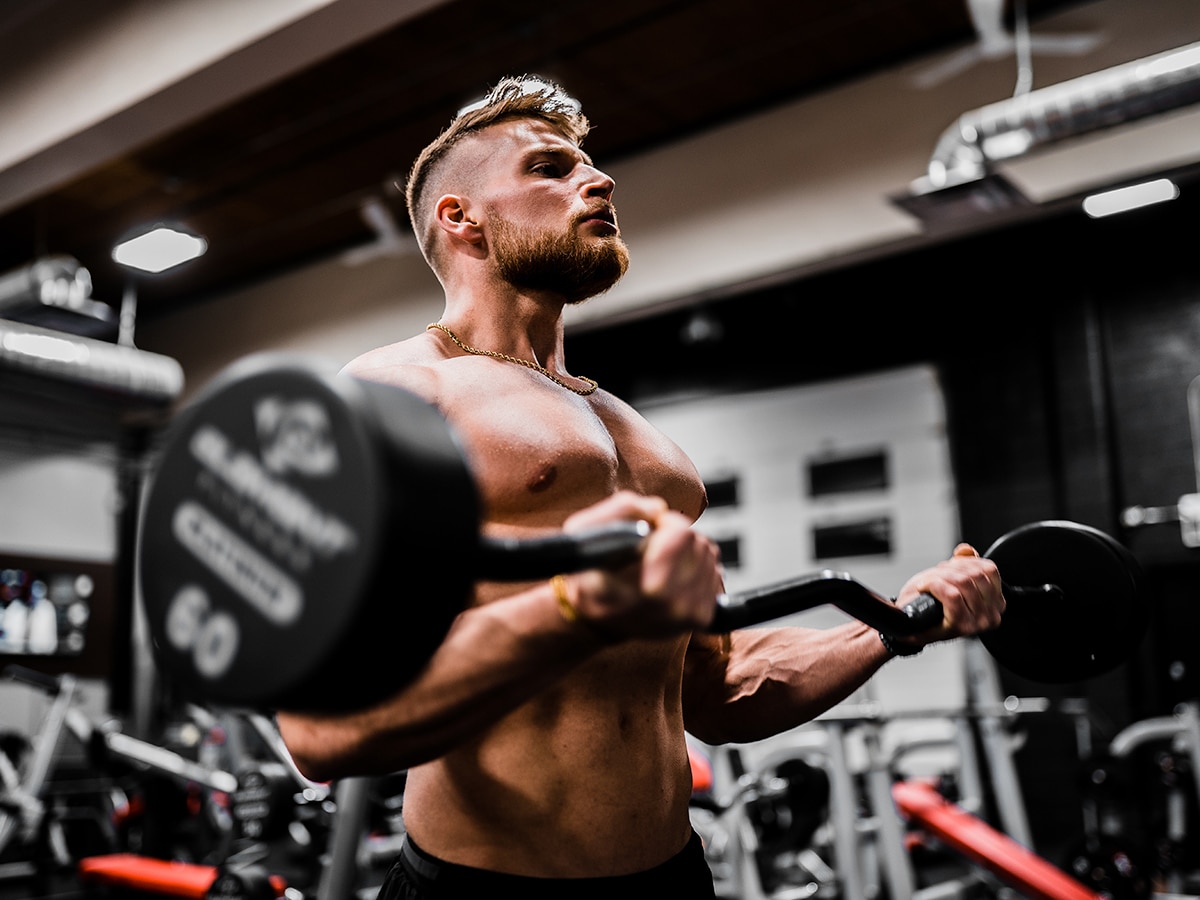
Best Bicep Exercises For Men at a Glance
Regardless of whether you are training to become the next Arnold Schwarzenegger or just to look good in a cut-off tee, it pays to have a quality biceps workout routine. The best bicep exercises for mass can help you to achieve that desirable triangular shape, adding some much-needed width to your upper body.
Should you be new to the world of bicep workouts, you’ll soon find out that adding mass to the muscle group is a challenging premise. That does not mean that it’s impossible to develop a killer set of biceps, but rather that it will require some strict commitment to specialised isolation exercises.
The best bicep workouts and exercises allow you to increase your muscle mass, strength, stability and aesthetic appeal. Adding these movements to your overall fitness regime can elevate your routine from a basic gym-goer’s attempt to one of the best on the planet.
- Best biceps exercise overall: Concentration Curl
- If you want to isolate biceps: Alternating Incline Dumbbell Curl
- If you want to add resistance: Standing Cable Curl
- If you want to target short head: Seated Alternating Hammer Curl
- If you want to target long head: Zottman Curl
- If you want to target brachialis: Standing Reverse Barbell Curl
Here are the best bicep exercises for men.
1. Alternating Incline Dumbbell Curl
| Why it works: | The incline postion prioritises muscle tension and restricts form while the alternating movement promotes greater time under tension |
| Pros: | Increased time under tension compared to double curls Incline position isolates the biceps and restricts form Allows you to target specific arm |
| Cons: | Time consuming exercise Requires a lot of set up |
If you really want to add some bulge to that upper arm, one of the best bicep workouts for mass is the Alternating Incline Dumbbell Curl. This variation helps to strengthen the upper section of your brachii, helping you to achieve that large muscle growth you’ve been chasing. To perform the Alternating Incline Dumbbell Curl properly;
- On an incline bench, lie back with a dumbbell in each hand and palms facing forward.
- Keeping your elbow and shoulder stationary, slowly lift one weight to the front of your shoulder.
- Pause, squeezing your bicep at the top.
- Slowly reverse the movement to return to start.
- Repeat on the opposite side.
While there are a number of different variations to the traditional bicep curl movement, the Alternating Incline Dumbbell Curl is significantly better for muscle growth. Specifically, the incline position promotes greater isolation of the brachi and the alternating nature of the movement creates more time under tension. Furthermore, the seated position restricts rocking and swinging, meaning you are likely to have better form than in other variations. A study from the Grand Valley State University revealed that the average range of motion at the elbow was 11.9° less for the incline curl. Conversely, both the mean and maximum elbow flexion moments were significantly higher for the incline curl, prioritising stimulus at the peak of the movement. (1)
2. Seated Alternating Hammer Curl
| Why it works: | The hammer grip promotes greater activation of the short head of the biceps, while also reduce stress on the upper shoulder |
| Pros: | Increased time under tension compared to double curls Grip focuses on short head Allows you to target specific arm |
| Cons: | Time consuming exercise Grip may reduce strength |
While not necessarily the most well-known bicep workout, the Hammer Curl is a favourite among bodybuilders and strongmen alike. This Seated Alternating Hammer Curl variation allows you to focus on each arm individually, concentrating on singular growth and isolation. Put simply, the Hammer Curl allows you to switch muscle groups, strengthening your biceps brachialis, a deeper muscle that will aid in overall strength and shape. To perform a Seated Alternating Hammer Curl;
- Sit on a 90-degree bench with a dumbbell in each hand, palms facing in toward your body and arms extended straight toward the floor.
- Maintaining this neutral grip starting position, keep your elbow and shoulder stationary, slowly lift one weight to the front of your shoulder.
- Pause, squeezing your bicep at the top.
- Slowly reverse the movement to return to start.
- Repeat on the opposite side.
One of the major benefits of adding Hammer Curls to your bicep workouts is the exercise’s ease of use. The unique grip allows places more emphasis on the short head of the biceps, alleviating a lot of the shoulder and forearm tension. With long head injuries being a leading cause of shoulder pain, you may find this form of curl to be the most comfortable to perform. (3)
3. Standing Reverse Barbell Curl
| Why it works: | The pronated grip allows you to specifically target the brachialis, while also creating high tension on the forearms. |
| Pros: | Increased time under tension compared to supinated curls Grip focuses on brachialis |
| Cons: | Very challenging grip position Grip may reduce strength |
You definitely would have attempted a Barbell Curl at some point in your gym career, however, incorporating a reverse grip can add significant mass to your bicep workout. When you curl a weight with an overhand grip, you put further strain on the often underused brachioradialis. The Standing Reverse Barbell Curl is a great way to get your muscles working, but remember, you don’t need to go heavy with these ones. Lightweights will definitely do the trick. To perform Standing Reverse Barbell Curls;
- Stand with feet shoulder-width apart, arms straight to the floor, shoulders back, while holding a barbell with both hands.
- Keeping your elbows and shoulders stationary, slowly lift the weight to the front of your shoulders.
- Pause, squeezing your biceps at the top
- Slowly reverse the movement to return to start.
- Repeat on the opposite side.
While this movement shares a lot of similarities with the traditional Barbell Curl, the pronated grip does give you some added benefits. A study published by the National Strength and Conditioning Association in 1980 found that this variation is best for isolating the brachialis.
“The Reverse Curl has the component of isometric wrist extension to maintain neutral wrist position in addition to isometric finger flexion to hold the weight…The next effect of the Reverse Curl is to lesson the assistance of the bicep brachii, and thus isolate the brachialis.” (4)
4. Seated Alternating Dumbbell Curl
| Why it works: | The alternating nature of the movment increase neuromuscular effort throughout the whole elbow range of motion. |
| Pros: | Increased time under tension compared to double curls Allows you to target specific arm |
| Cons: | Time consuming exercise No back support can limit lifting ability |
When you’re making a list of the best exercises for biceps, you simply cannot ignore the dumbbell curl. One of the most iconic and simple movements, curls are great for activating your forearm and upper arm muscles. However, research published in the Journal of Sports Science and Medicine shows that the Seated Alternating variation is the best version of the iconic bicep exercise. This movement reportedly activated your upper muscles far better than other curl variations.
As with most lifting, the heavier the weight, the stronger you’ll get, however, it is important to make sure you contact at the top of the movement. To perform an Seated Alternating Dumbbell Curl properly;
- Sit on a 90-degree bench with a dumbbell in each hand and palms facing forward.
- Keeping your elbow and shoulder stationary, slowly lift one weight to the front of your shoulder.
- Pause, squeezing your bicep at the top.
- Slowly reverse the movement to return to start.
- Repeat on the opposite side.
While it’s no secret that the Dumbbell Curl is a staple exercise among the best bicep workouts, recent studies have highlighted just how important the movement is. A 2009 report published in the Journal of Sports Science & Medicine revealed that performing Dumbbell Biceps Curls resulted in a considerable neuromuscular effort throughout the whole elbow range of motion. Similarly, the Incline Dumbbell Curl and the Dumbbell Biceps Curl were found to be preferable for the improvement of biceps brachii force in training programs. (2)
5. Standing Cable Curl
| Why it works: | Using the cable machine to perform curls increases the overall tension on the biceps, leading to enhanced muscle growth. |
| Pros: | Increased time under tension compared to regular curls The fixed nature of the equipment promotes strict form |
| Cons: | Will require a cable machine Grip will play an important role in this movement |
Forget what you think you know about cable exercises. They’re actually a great way to work out different sections of your body, in particular, the brachioradialis. The Standing Cable Curl allows you to keep consistent resistance, increasing the strain on your muscles and giving you far more efficient bicep workouts. To perform Standing Cable Curls;
- Stand with feet shoulder-width apart facing a cable machine with the machine’s handle on the lowest setting.
- Hold the handle with both hands palm facing forward and arms extended straight to the floor.
- Keeping your elbows and shoulders stationary, slowly lift the weight to the front of your shoulders.
- Pause, squeezing your biceps at the top
- Slowly reverse the movement to return to start.
- Repeat on the opposite side.
While the Cable Curl is a great option for your next bicep workout, it also makes for an enticing home workout option. If you don’t have a cable machine, utilising elastic resistance (ER) has shown to be a valuable substitute. In fact, a 2010 study from the Journal of Strength and Conditioning Research found that applying ER in series with resistance provided by a cable-based resistance machine may enhance the overall stimulus applied to the muscle. (5) “In particular, those seeking greater increases in muscular hypertrophy may benefit the greatest from this form of training as the enhanced muscular contraction and pattern may result in greater muscle overload and adaptation.”
6. Standing Barbell Curl
| Why it works: | A popular exercise that promotes tension on the biceps brachii and brachialis |
| Pros: | Mixed bicep-focused exercise The fixed nature of the equipment promotes strict form Barbell may allow for greater strength |
| Cons: | Form is critical and going heavy often leads to swinging Poor form in this exercise will lead to shoulder injury |
Once you’ve got the more complex curl variations out of the way, you should return back to the old faithful. The Standing Barbell Curl is traditionally the most common arm workouts for men, and for good reason. Barbells allow you to work both arms simultaneously and evenly, which is great for stability and control. To perform a Standing Barbell Curl;
- Standing tall, hold the barbell with a wide, underhand grip.
- Starting with the bar at hip height, squeeze your core and contract your biceps to curl the bar up to shoulder height.
- Keeping your elbows and shoulders stationary, slowly lift the weight to the front of your shoulders.
- Pause, squeezing your biceps at the top
- Slowly reverse the movement to return to start.
- Repeat on the opposite side.
A staple exercise among the best bicep workouts, the Standing Barbell Curl targets your biceps brachii muscle, while also placing tension on the brachialis. This muscle is responsible for elbow flexion, so it’s critical that you keep this element up throughout your arm regime. Importantly, the fixed nature of the bar means you will likely be able to lift heavier weights than with a set of dumbbells.
7. Zottman Curl
| Why it works: | A variation of the classic Bicep Curl, this exercise promotes forearm and grip strength in addition to bicep tension |
| Pros: | Mixed bicep-focused exercise Feature enhanced eccentric overload of the forearms |
| Cons: | The movement can be challenging for beginners Swinging the weight in this movement can lead to significant injury |
This multi-movement piece is one of the best arm workouts for men that you can add to your arsenal. Essentially, this dumbbell lift is a hybrid curling movement that borrows elements from the basic bicep dumbbell curl and a reverse-grip curl. The Zottman Curl focuses on all three major muscles that make up the biceps – brachii, brachialis and brachioradialis. Specifically, the concentric phase of this lift uses the biceps brachii, while the eccentric phase of this lift enhances the use of the forearm muscles. To perform the Zottman Curl;
- Hold arms at your side with a dumbbell in each hand.
- Turn your arms so your palms face forward.
- Bend your elbows and curl the dumbbells close to your shoulders without moving your upper arms.
- Pause, then rotate the dumbbells so your palms face forward again.
- Slowly lower the weights down in that position.
- Rotate the dumbbells back to the starting position.
- Repeat.
If you’ve never heard of the Zottman Curl, you may be surprised to know just how effective this bicep exercise can be. Named after the late 1800s strongman George Zottman who is said to have developed this exercise, this movement is responsible for building size and width across the lower bicep and into the forearms.
A 2014 study published in the Strength and Conditioning Journal revealed that the Zottman Curl may lead to improve forearm and grip strength due to the enhanced eccentric overload of the forearm muscle during the movement. (6) Importantly however, if you struggle to rotate your wrist at the end of the concentric phase, you can also rotate your wrists inward to a hammer position for the eccentric phase, until your forearm muscles get a little stronger.
8. Decline Dumbbell Curl
| Why it works: | A variation of the classic Bicep Curl, this exercise promotes tension on the upper arm. |
| Pros: | Isolation exercise targeting an underutilised area |
| Cons: | The movement can be challenging to set The unique positioning will significantly reduce strength |
When you lie down with your arms extended freely, it requires a lot more effort and stability to contract your muscles. The Decline Dumbbell Curl is a great example of how you can use this theory to bolster your bicep muscles. To perform Decline Dumbbell Curls;
- Using a bench set to 45 degrees, lie with your chest facing down.
- Without moving your upper arms, bend your elbows and curl the dumbbells as close to your shoulders as you can.
- Pause at the top.
- Slowly lower the weight back to the starting position, completely straightening arms at the bottom.
This variation of the Bicep Curl helps to target the upper arm muscles by placing the tension of the weight into it. As a result, you are able to prioritise upper bicep stimulation, which is critical to the overall shape of your arms.
9. Concentration Curl
| Why it works: | A variation of the classic Bicep Curl, this exercise promotes tension on the upper arm. |
| Pros: | Isolation exercise targeting an underutilised area |
| Cons: | The movement can be challenging to set The unique positioning will significantly reduce strength |
An isolated bicep exercise, the Concentration Curl allows you to focus solely on building significant muscle mass to the core section of your upper arm. You will need a dumbbell for this one and while going heavy is always helpful in building muscle, it pays to do as the name suggests and concentrate on the contraction. To perform a Concentration Curl;
- Sit on the bench and spread your legs.
- Rest the arm holding the dumbbell on the same side leg, just below the knee, with the weight hanging between your legs.
- Place your off-hand on your thigh to keep your torso upright and stable.
- Curl the weight up.
- Pause, squeezing your biceps at the top
- Slowly reverse the movement to return to start.
- Repeat on the opposite side.
If you are looking to build bigger arms, Concentration Curls have been found to be slightly more effective at building the short head of the biceps brachii. This element is responsible for the make-up of the lateral portion of the bicep. Importantly, a 2014 study from the American Council on Exercise (ACE) that tested eight popular bicep curl variations to measure the effect on the biceps brachii found that the concentration curl created significantly better muscle activation of the biceps compared with other variations. (7)
10. Cable Flex Curl
| Why it works: | A variation of the classic Bicep Curl, this exercise maintains tension on your bicep muscles while alternating flexed muscles |
| Pros: | Compound exercise that targets multiple ground |
| Cons: | The movement can be challenging to set The unique positioning will significantly reduce strength |
Another cable exercise, the Cable Flex Curl is a great way to keep tension on your bicep muscles while alternating flexed muscles. Even just holding your arms in this position will give you an arm workout, however, the added flex will throw your muscles into overdrive. To perform Cable Flex Curls;
- Stand between two weight stacks of a cable crossover station.
- Grab a high-pulley handle in each hand.
- Hold your arms out to the sides, parallel to the floor.
- Curl one hand toward your head, without moving your right arm.
- Slowly straighten your left arm.
- Repeat the move with the opposite arm.
11. Preacher Curl
| Why it works: | This movement elicites high muscle activation only for a short range of elbow joint angle |
| Pros: | Fixed nature of equipment promotes strict form Isolated movement that improves stability and mobility |
| Cons: | Will require specialist equipment Position of body will reduce strength |
A favourite of the Austrian maestro himself, the Preacher Curl zones in on your front-arm muscles, helping you add some serious size. This isolated movement is fantastic for stability and upper arm mobility. To perform Preacher Curls;
- Hold a barbell with your hands six inches apart.
- Rest your upper arms on the sloping pad of a preacher bench with your elbows slightly bent.
- Bend your elbows and curl the bar toward your shoulders, without moving your upper arms.
- Pause, squeezing your biceps at the top
- Slowly reverse the movement to return to start.
A unique movement, the Preacher Curl, whether performed with dumbbells or a barbell adds a great muscle-building element to your bicep workouts. Specifically, this movement was shown to improve activation of this muscle area, due to its targeted approach. A study published in the Journal of Sports Science & Medicine found that while the Incline Dumbbell Curl and the classical Dumbbell Biceps Curl resulted in similar patterns of biceps brachii activation for the whole range of motion, the Preacher Curl elicited high muscle activation only for a short range of elbow joint angle. (2)
12. Seated Cable Row
| Why it works: | This movement utilises the biceps to assist the lats and rhomboids. |
| Pros: | Fixed nature of equipment promotes strict form Isolated movement that improves stability and mobility |
| Cons: | Will require specialist equipment Not a beginner exercise |
This may seem like more of a back exercise than arm workout for men, however, it’s the upright position that really takes the Seated Cable Row over the top. When you sit and row, your biceps are in the direct line of the pull, meaning they have to work harder to maintain stability. To perform Seated Cable Rows;
- Placing your feet on the platform with knees slightly bent, sit at a seated cable row station.
- Hold a V-bar with your palms facing each other.
- Pull your shoulders back as you pull the bar toward your torso.
- Squeeze, before slowly returning back to the starting position.
While the Seated Cable Row is often seen as a back exercise, the biceps get a solid workout whenever this movement is performed. Specifically, the exercise requires the lats and rhomboids to work as the primary movers, however, the trapezius and biceps help to assist with the pulling movement.
13. Bent Over Row
| Why it works: | Similar to the Seated Row, this movement utilises the biceps to assist the lats and rhomboids. |
| Pros: | Compound movement that targets a lot of muscles Enables you to lift heavy |
| Cons: | Form can be challenging to master Poor form will lead to injury |
Similarly, the Bent Over Row activates the upper bicep and body due to its ‘pull’ movement. For this exercise, it pays to add a bit more weight and try to go heavy. To perform the Bent Over Row;
- Hold a barbell at arm’s length with your hands just beyond shoulder-width apart.
- Bend at your hips and knees, tensing your core for stability.
- Pull the bar to your ribcage.
- Pause, and then lower back to the starting position.
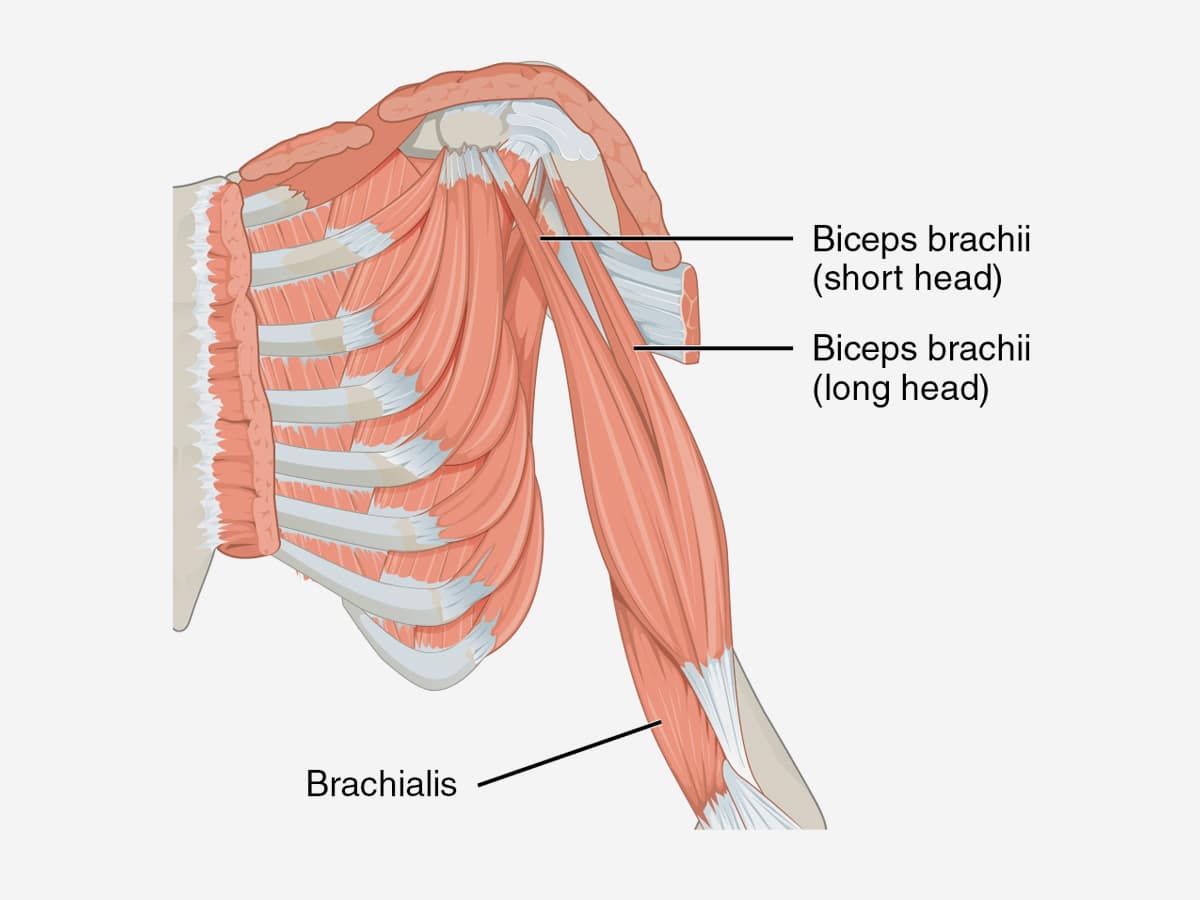
What are Your Biceps?
Now that we have gone through the bicep exercises for mass that will help you build the ideal upper body, you should learn what to look out for. On a basic level, your biceps are a large muscle group located on the front section of your upper arm. They are commonly referred to as the biceps, however, are also known by the Latin name biceps brachii (meaning ‘two-headed muscle of the arm’). This muscle group’s primary function is to rotate the forearm and flex the elbow. (8)
As indicated by the Latin name, your biceps are split into two major sections; the long head and the short head. Both heads of the muscle arise from the scapula (shoulder blade) and combine in the middle arm to form a muscle mass. At each end are connective tissues called tendons that anchor the muscles to bone. Both heads work in tandem to move the forearm, allowing them to rotate 90 degrees. Let’s take a deeper dive into those two heads.
Long Head
Without going into too much detail, the long head originates from a cavity in the scapula called the glenoid. The head passes through the shoulder joint to the upper arm through a small section in the humerus.
Short Head
On the other end of the spectrum, the short head originates from a projection on the scapula called the coracoid. It runs alongside the long head on the inside of the arm.
Function
As mentioned above, the primary function of the bicep is to flex the elbow and rotate the forearm. Despite what you might think, however, the biceps are not the most powerful flexor of the forearm. Instead, the muscle group serves to support and stabilise the deeper brachialis muscle for greater movement and strength.
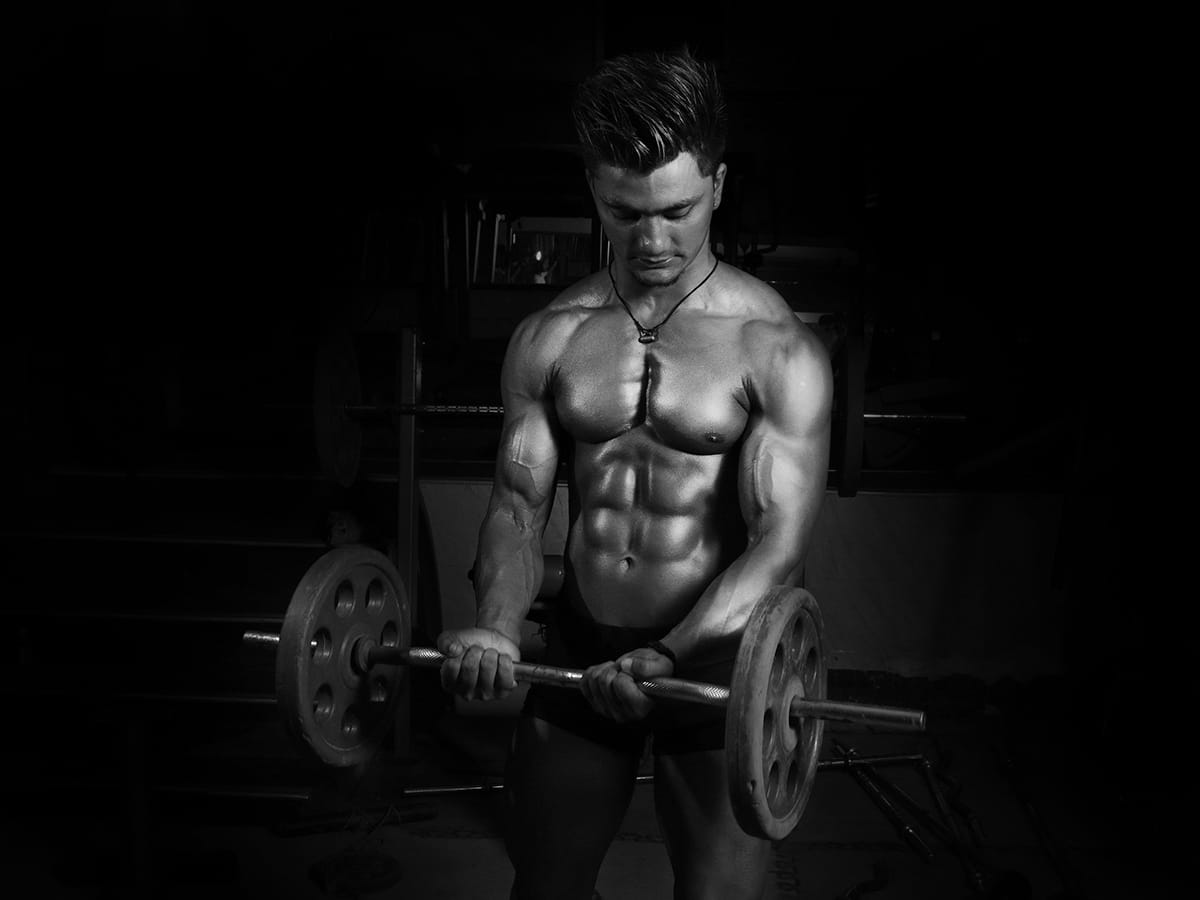
Things to Consider for Bicep Workouts
If you’re ready to head into the gym and get your arms back to their biggest and best, adding these bicep exercises to the mix will certainly help your growth. But that’s not to say the movements are foolproof. In order to get the most out of your bicep workout, you should consider these key pieces of advice. When it comes to any form of strength training, there are some elements that require specific attention. In order to avoid injury and increase efficacy, here’s what you need to consider with your bicep workout.
- Warm-Up/Stretch – Warming-up is one of the most important elements of any workout. The process of stretching gradually increases the strain on your cardiovascular system by raising your body temperature. According to a 2007 study published in Sports Med, the increased blood flow to your muscles may help reduce soreness and lessen the risk of injury. (9)
- Remember to Squeeze -As all of the workout descriptions explain, it is pivotal that you squeeze at the top of each muscle contraction. This allows you to focus the tension on your bicep, working to break down the muscle fibres and help you build muscle mass.
- Rest More -Depending on your specific style of training, your rest periods will play a significant role in your bicep workout. When it comes to straight muscle growth, it pays to rest more. By resting upwards of two to three minutes, you can ensure your muscles are fully repaired, meaning you can lift at full capacity and achieve your bodybuilding goals.
- Incorporate Rest Days – While it might sound detrimental, going super hard in the gym is not always the recipe for success. Overworking your shoulders by performing multiple sets on successive days may lead to increased fatigue. One study performed by the Department of Physical Education and Recreation, Western Kentucky University found that 72 hours of rest between strength training sessions was ideal for full muscle recovery. (10)
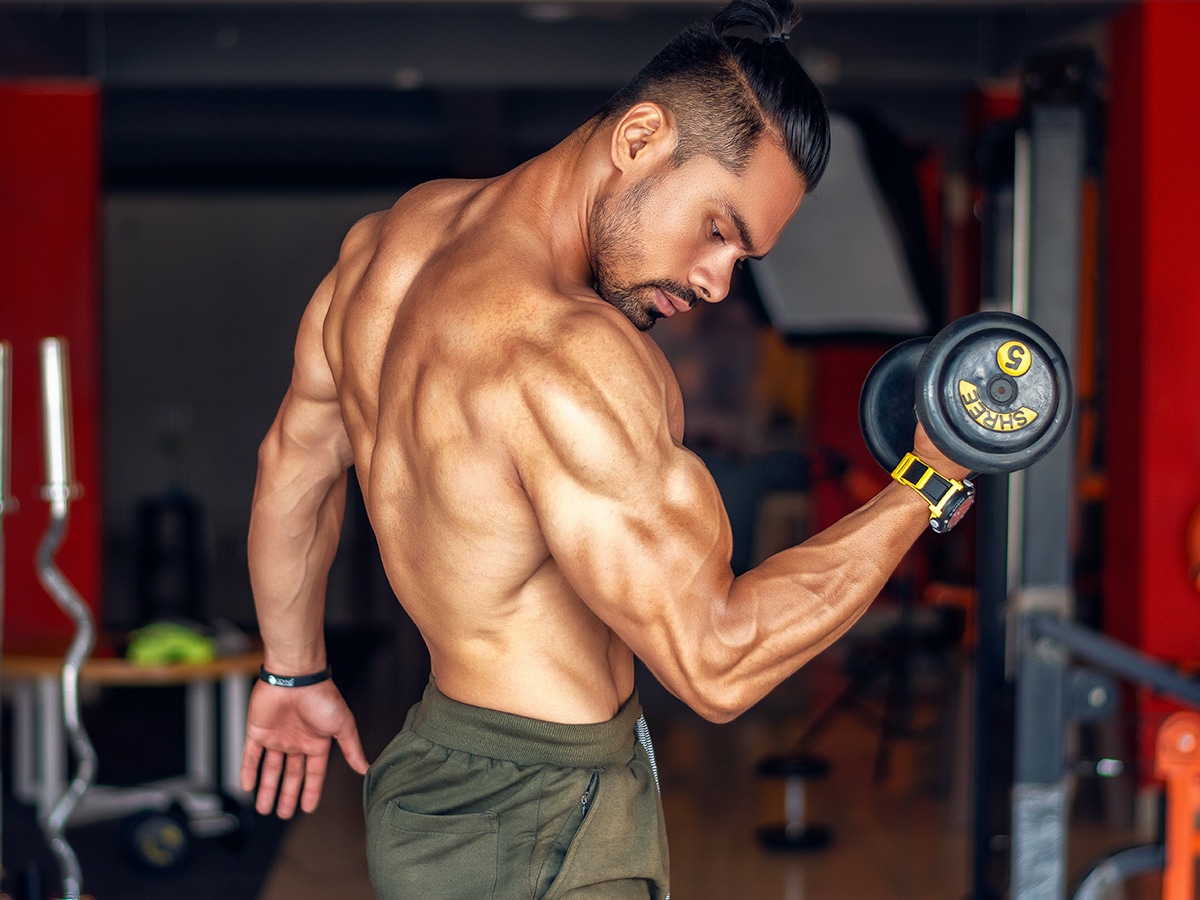
Alternatives to Bicep Exercises
If you are a fitness fanatic looking to bolster your workout routines, don’t stop at shoulder exercises. Below, you’ll find a range of workouts and guides to help you build size and strength.
- How to Train For Your Body Type
- What is Hypertrophy? The Workout Hack Trainers Swear By
- Best Tricep Exercises for Men
- Best Chest Exercises for Men
- Best Shoulder Exercises for Men
- Best Trap Exercises for Strength and Size
How We Chose This List of Bicep Exercises
To curate our list of the best bicep exercisess, we relied on the expertise of our team of editors who have over five years of experience covering fitness and health content. Man of Many has had the opportunity to personally test each exercise featured on this list, while also taking into account many industry research pieces and medical studies. Our evaluation process takes into consideration three key factors: tension, muscle activation and competency level, ensuring a comprehensive rating.
Citations
- Miller, Adam, “An Upper Extremity Biomechanical Model: Application to the Bicep Curl” (2007). Masters Theses. 686. https://scholarworks.gvsu.edu/theses/686
- Oliveira, L. F., Matta, T. T., Alves, D. S., Garcia, M. A., & Vieira, T. M. (2009). Effect of the shoulder position on the biceps brachii emg in different dumbbell curls. Journal of sports science & medicine, 8(1), 24–29.
- Linaker, C. H., & Walker-Bone, K. (2015). Shoulder disorders and occupation. Best practice & research. Clinical rheumatology, 29(3), 405–423. https://doi.org/10.1016/j.berh.2015.04.001
- Kostek, Mark T.; Knortz, Karen. Kinesiology Corner: The Bicep Curl and the Reverse Bicep Curl. National Strength Coaches Association Journal 2(6):p 55-55, December 1980.
- García-López, David1; Herrero, Azael J1,2; González-Calvo, Gustavo1; Rhea, Matthew R3; Marín, Pedro J1,2. Influence of “In Series” Elastic Resistance on Muscular Performance During a Biceps-curl Set on the Cable Machine. Journal of Strength and Conditioning Research 24(9):p 2449-2455, September 2010. | DOI: 10.1519/JSC.0b013e3181e3482f
- Melrose, Don PhD, CSCS*D. Exercise Technique: The Zottman Curl. Strength and Conditioning Journal 36(1):p 92-93, February 2014. | DOI: 10.1519/SSC.0b013e318297a092
- Young, S, M.S., Porcari, J, Ph.D, Camic, C, Ph.D, Kovacs, A, Ph.D, Foster, C, Ph.D. (2014) Ace Study Reveals Best Bicep Exercises. American Council on Exercise, August 2014.
- Lippert LS (2006). Clinical kinesiology and anatomy (4th ed.). Philadelphia: F. A. Davis Company. pp. 126–7. ISBN 978-0-8036-1243-3.
- Woods, K., Bishop, P. & Jones, E. Warm-Up and Stretching in the Prevention of Muscular Injury. Sports Med 37, 1089–1099 (2007).
- McLester, J. R., Bishop, P. A., Smith, J., Wyers, L., Dale, B., Kozusko, J., Richardson, M., Nevett, M. E., & Lomax, R. (2003). A series of studies–a practical protocol for testing muscular endurance recovery. Journal of strength and conditioning research, 17(2), 259–273.
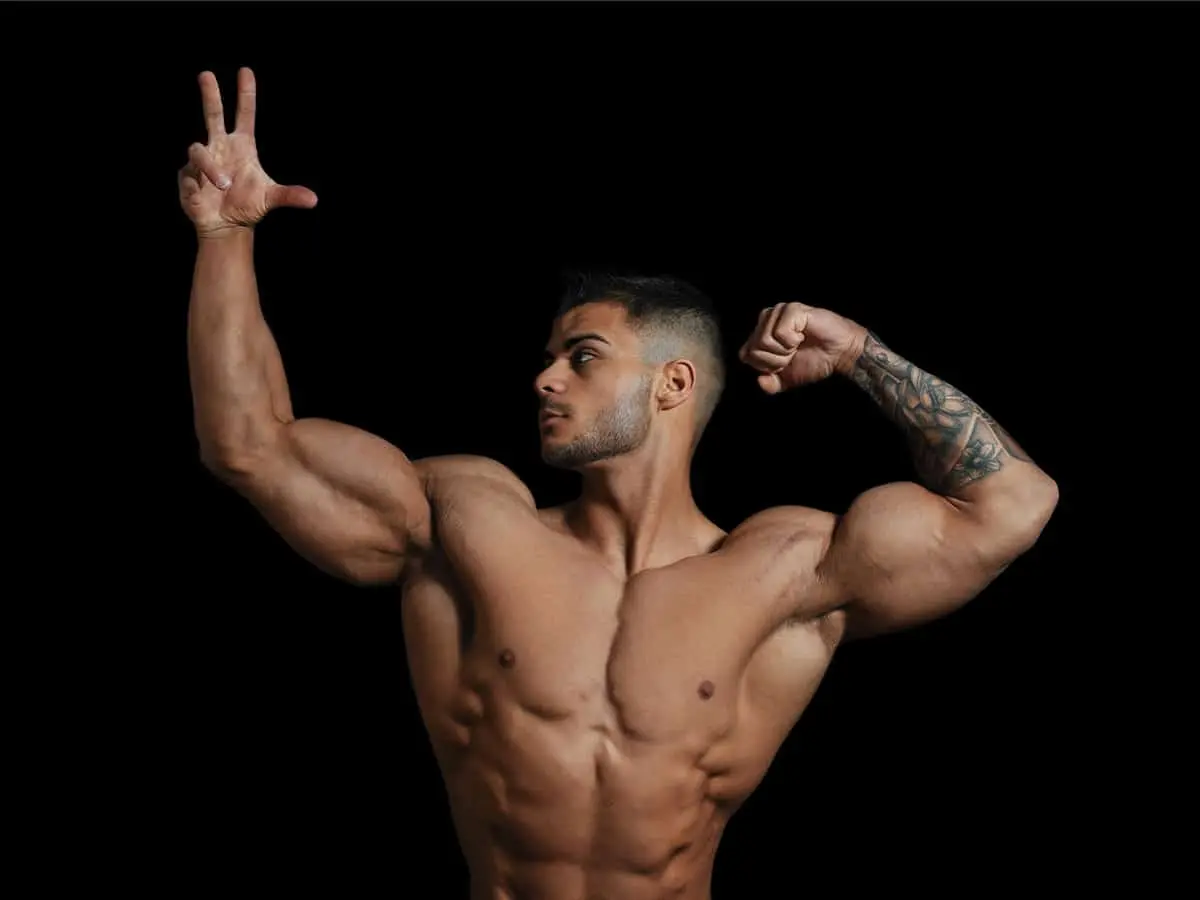





























Comments
We love hearing from you. or to leave a comment.